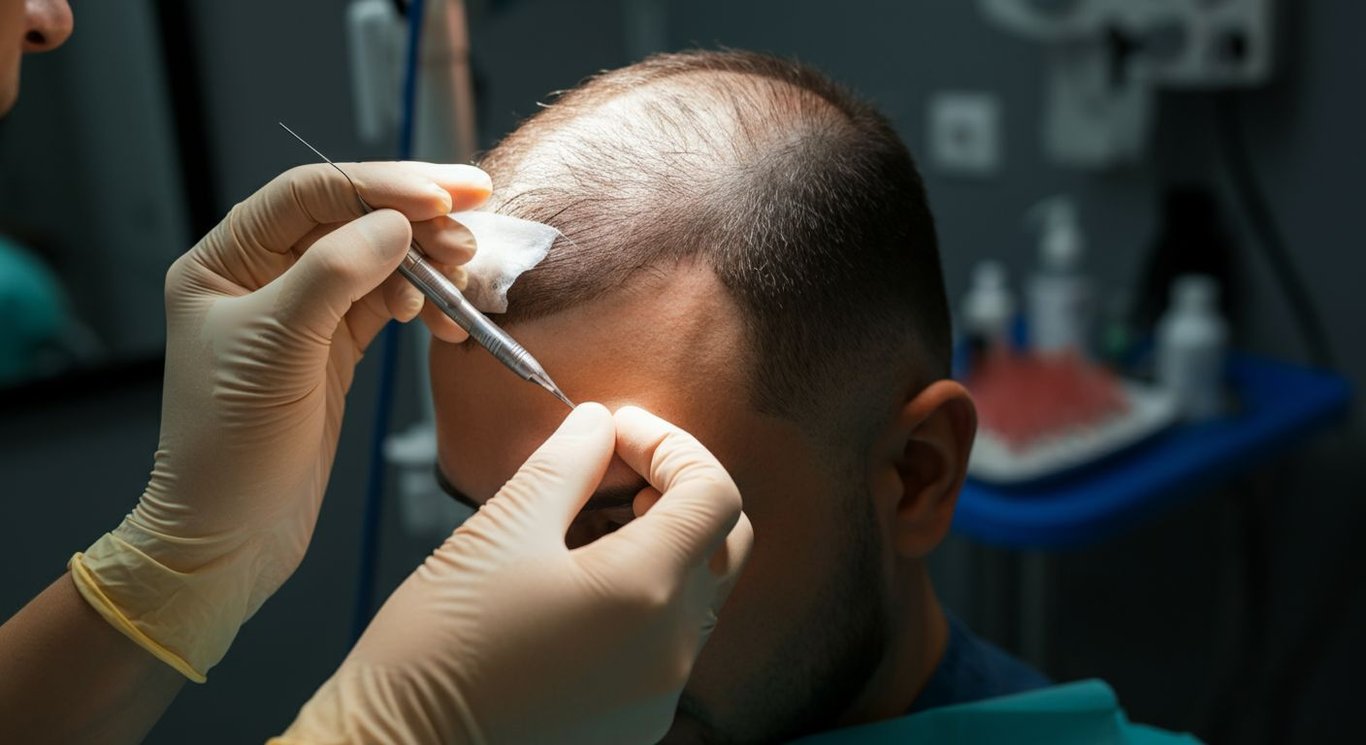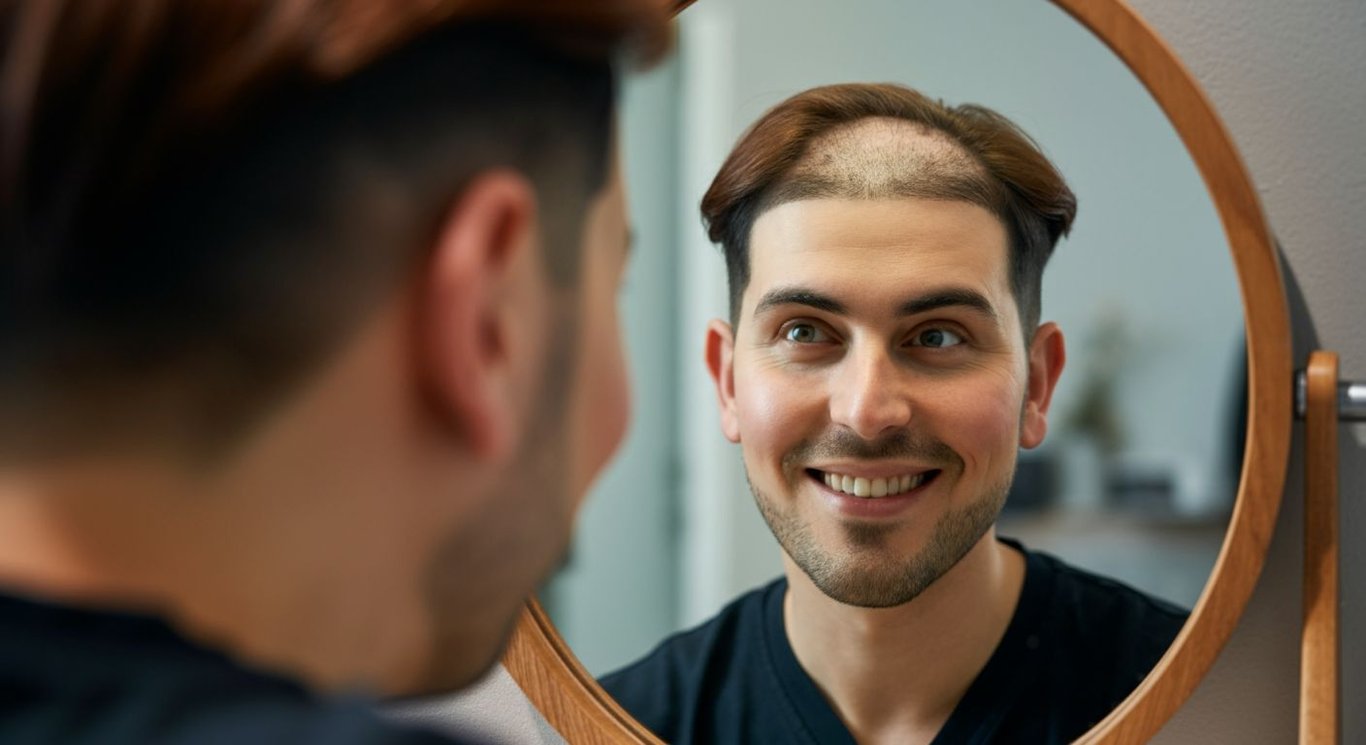Unlocking Hair Restoration: Is a Hair Transplant Right for You?
Explore if a hair transplant suits your needs by understanding innovative techniques such as FUE and DHI offered by estethica, ensuring a comprehensive restoration journey.
The journey to reclaiming one's hair often begins with understanding the available options. Hair transplant is a popular procedure, offering permanent solutions for those experiencing hair loss. With techniques like DHI and FUE, individuals are no longer limited in their choices. As an esteemed provider in this field, estethica stands out by offering cutting-edge technologies and personalized care. This post will guide you through the essentials of hair transplantation, its alternatives, and what you can expect at every stage of the process.
Decoding Hair Loss: Understanding the Root Causes
Unveiling Common Triggers of Hair Loss
Hair loss can stem from a variety of sources, often making it challenging to pinpoint a single cause. While many believe that hair loss is solely a result of genetic predispositions, a multitude of factors can contribute to thinning hair or baldness. Identifying these triggers is crucial for customizing effective hair restoration strategies. The first step in combating hair loss involves understanding whether it is hereditary, stress-induced, or related to underlying health conditions.
- Genetic Predisposition: Often referred to as androgenetic alopecia, this is a hereditary condition causing a receding hairline and thinning crown.
- Stress and Trauma: Significant emotional or physical stress can lead to temporary hair shedding known as telogen effluvium.
- Medical Conditions and Treatments: Certain illnesses, such as thyroid disorders and autoimmune diseases, as well as treatments like chemotherapy, can cause hair loss.
For instance, consider individuals who experience hair loss after periods of high stress; this is often a temporary condition, but it highlights the impact of lifestyle on hair health. Others might notice gradual thinning, indicative of genetic factors, which could make them suitable candidates for a hair transplant. Addressing these underlying causes can lead to more effective and tailored solutions for managing and potentially reversing hair loss.
Exploring Treatment Options for Hair Loss Issues
Once the primary cause of hair loss has been identified, exploring suitable treatment options becomes the next critical step. Various solutions are available, ranging from medical treatments that stimulate hair growth to surgical procedures like FUE hair transplant and DHI hair transplant. Each approach caters to different types of hair loss and individual preferences, ensuring a personalized treatment plan. According to experts, understanding the nuances of each treatment can significantly improve the success rate and patient satisfaction in hair loss treatment. The path to recovery may begin with understanding how much does a hair transplant cost based on individual needs.
- Medical Treatments: Medications like minoxidil and finasteride can help slow hair loss and stimulate new growth.
- Surgical Options: Procedures like FUE and DHI involve transplanting hair follicles from denser areas to thinning or balding spots.
- Non-Surgical Solutions: Options such as laser therapy and PRP (Platelet-Rich Plasma) injections are available for those seeking non-invasive treatments.
Different approaches offer varying degrees of effectiveness and suitability, based on factors like the extent of hair loss, the individual's health, and personal expectations. For example, some individuals find success with medical treatments alone, while others may opt for a surgical solution to achieve more dramatic and lasting results. To maximize your chance of hair restoration specialist Antalya, consider the latest technology available at a reputable clinic for optimal results.

Fue vs. Dhi: Choosing the Best Hair Transplant Technique
Comparing Extraction and Implantation Methods
When considering hair transplantation, choosing between FUE and DHI can be overwhelming. While FUE focuses on extracting follicles and implanting them into incisions, DHI allows direct implantation without incisions, offering quicker recovery and reduced scarring. FUE, or Follicular Unit Extraction, involves removing individual hair follicles from the donor area, typically the back of the head, and then making small incisions in the recipient area where the follicles are implanted. In contrast, DHI, or Direct Hair Implantation, uses a specialized pen-like tool to implant the follicles directly into the scalp without the need for prior incisions. This direct approach minimizes trauma to the scalp, potentially leading to faster healing times and more natural-looking results.
- FUE (Follicular Unit Extraction): Involves extracting individual follicles and creating incisions for implantation.
- DHI (Direct Hair Implantation): Uses a specialized pen for direct implantation without prior incisions.
- Reduced Scarring: DHI often results in less visible scarring due to the minimally invasive nature of the procedure.
For individuals concerned about scarring or recovery time, DHI might be a more appealing option. Those seeking a hair transplant commonly consider the recovery period. It’s also important to consult with a specialist to determine which method aligns best with individual needs and expectations, especially if you are searching for the best hair transplant clinic Istanbul.
Evaluating Candidacy for FUE and DHI Procedures
Determining whether FUE or DHI is the right choice involves assessing individual hair loss patterns, scalp condition, and overall health. Generally, both procedures are suitable for individuals with androgenetic alopecia, but the specific approach often depends on the extent of hair loss and the patient's aesthetic goals. DHI may be preferred for those needing precise placement and higher density, while FUE can cover larger areas more efficiently. Before considering any hair loss treatment, consider consulting with specialists like those at estethica to understand which is best suited for your kind of hair.
- Scalp Condition: A healthy scalp is crucial for the success of both FUE and DHI.
- Hair Loss Pattern: The extent and pattern of hair loss influence the choice between FUE and DHI.
- Density Requirements: DHI may be favored for achieving higher density in specific areas.
For example, someone experiencing early stages of balding might opt for DHI to achieve a fuller hairline with meticulous placement. On the other hand, someone with more extensive hair loss might choose FUE to cover a larger area effectively. Moreover, patients often look at celebrity hair transplant before after to evaluate these procedures. Understanding these factors ensures a more tailored and successful hair restoration journey. The latest technology in hair transplant optimizes outcomes, ensuring natural-looking results.

Beyond the Scalpel: Exploring Non-Surgical Hair Loss Solutions
Advantages of Non-Invasive Hair Loss Interventions
For individuals hesitant about surgery, non-surgical hair loss treatment methods present appealing alternatives. These options range from advanced laser therapies to topical solutions designed to stimulate hair growth. Many people explore non surgical hair loss solutions due to the lower risk and minimal downtime involved. These treatments are particularly attractive for those in the early stages of hair thinning or for whom surgical options are not suitable. The focus is on enhancing the health of existing hair and encouraging dormant follicles to reactivate.
- Laser Therapy: Uses low-level light to stimulate hair follicles.
- Topical Treatments: Medications applied directly to the scalp to promote growth.
- Minimally Invasive: Avoids the need for surgical incisions, reducing recovery time.
For example, consider a professional with a busy schedule who opts for laser therapy sessions during lunch breaks, avoiding any interruption to their work life. Or someone using topical treatments at home as part of their daily routine. While effectiveness varies, approximately 60% of users report noticeable improvements with consistent use of these non-surgical methods. Exploring these options can be the first step for individuals seeking discreet and convenient hair restoration.
Understanding the limitations of non-surgical treatment options
While non-surgical methods offer various benefits, understanding their limitations is vital. These treatments might not deliver the same dramatic or permanent results as a hair transplant, especially in advanced cases of hair loss. They typically work best for stimulating existing follicles rather than creating new ones in areas where hair has completely stopped growing. It's important to set realistic expectations and understand that ongoing maintenance is often required to sustain any improvements achieved. Remember that even well-known figures like Elon Musk or Matthew McConaughey may have explored various solutions, highlighting that hair restoration journeys can differ.
- Limited Regrowth: Primarily stimulates existing follicles, not new hair creation.
- Maintenance Required: Ongoing treatments are often needed to maintain results.
- Varied Effectiveness: Results can differ significantly based on individual factors and hair loss severity.
Those with significant bald patches may find that surgical options offer more comprehensive coverage. Others may find that the benefits of treatments such as turkish hair implants meet their needs. For instance, someone with a receding hairline might find laser therapy helpful in slowing down further loss, but it may not fully restore the hairline. Consulting with specialists at clinics like estethica can provide clarity on whether non-surgical options are sufficient or if a hair transplant is more appropriate given the hair loss pattern.

Hair Transplant: What to Expect Before, During, and After
Navigating the Hair Transplant Journey
Embarking on a hair transplant involves several key stages: initial consultation, procedure day, and the weeks and months that follow. Knowing what to anticipate can significantly ease anxiety and set realistic expectations. Each phase of the process is designed to ensure patient comfort, safety, and optimal results. In this journey, it's essential to understand each step, from initial assessment to the final stages of hair regrowth.
- Consultation: Initial assessment and planning of the procedure.
- Procedure: The day of the transplant, including extraction and implantation.
- Recovery: Post-operative care and the timeline for hair regrowth.
For instance, at estethica, the pre-operative consultation includes a detailed scalp analysis. During the procedure, advanced techniques such as DHI hair transplant ensures high precision. Post-operatively, patients receive comprehensive aftercare instructions to maximize graft survival. Therefore, understanding the process is critical. Approximately 90% of patients report satisfaction with their estethica hair transplant results, underscoring the effectiveness of a well-managed process.
Understanding Post-Operative Care and Regrowth
Post-operative care is paramount for a successful hair transplant, influencing both comfort and the ultimate outcome. Following specific guidelines helps minimize complications and ensures optimal graft integration. The regrowth phase varies among individuals, but understanding the typical timeline reduces unnecessary anxiety. Proper care includes gentle washing, avoiding strenuous activities, and attending follow-up appointments. You can look at hair transplant aftercare summer or hair transplant recovery winter for seasonal precautions.
- Gentle Washing: Proper cleaning to prevent infection.
- Activity Restrictions: Avoiding strenuous activities.
- Follow-Up: Regular check-ups.
For example, imagine a patient who meticulously follows post-op instructions, experiencing quicker healing and better graft survival. Conversely, a patient neglecting aftercare might encounter complications, delaying regrowth. estethica provides detailed aftercare guides and support, with around 95% of patients reporting adherence to these guidelines. It is important to keep in mind that hair restoration specialist Antalya can help you achieve the desired look as well. Therefore, following the recommended protocols significantly increases the likelihood of a successful hair restoration journey. Celebrities like Elon Musk or Matthew McConaughey might be role models for this process.
estethica Experience: Pioneering Hair Transplantation
The estethica Approach to Hair Transplantation
estethica distinguishes itself in the field of hair transplant through a blend of advanced techniques and patient-centered care. Highlighting procedures like Multi DHI, the clinic ensures each patient receives a tailored treatment plan that aligns with their specific needs and expectations. estethica's commitment extends beyond the procedure room, focusing on comprehensive aftercare to ensure optimal healing and natural-looking results. The clinic’s approach integrates cutting-edge technology with a deep understanding of individual hair characteristics, ensuring a personalized experience for everyone.
- Advanced Techniques: Utilizing methods like Multi DHI for enhanced precision.
- Patient-Centered Care: Tailoring treatment plans to individual needs.
- Comprehensive Aftercare: Providing extensive support for optimal results.
For example, patients receive detailed consultations to assess their hair loss treatment needs, followed by personalized procedure and aftercare strategies. These personalized plans focus on promoting the health of existing and newly transplanted hair. estethica's dedication to innovation and patient satisfaction solidifies its reputation as a leader in hair restoration, attracting individuals seeking top-tier care. It's like seeing Elon Musk or Matthew McConaughey get the specialized attention they need for their procedures, ensuring impeccable results.
Analyzing Cost and Accessibility in Hair Transplantation
Understanding the Factors Influencing Hair Transplant Costs
The expense associated with a hair transplant is influenced by several variables. The specific technique used (such as FUE or DHI), the amount of grafts required, the surgeon’s experience, and the geographic location of the clinic all play significant roles. While some clinics might offer lower initial prices, it's crucial to consider the potential for additional costs, such as follow-up appointments and medications. Clinics like estethica provide transparent assessments to help patients understand the full scope of their investment. Therefore, knowing what features cause prices fluctuations is important due to the latest technology in hair transplant.
- Technique Used: FUE, DHI, and other methods have different cost structures.
- Number of Grafts: More extensive hair loss requires more grafts, raising the price.
- Clinic Location: Costs vary based on the clinic's geographic location.
For example, a patient requiring a large number of grafts to restore a full head of hair will likely face a significantly higher overall cost than someone needing a smaller procedure to fill in a receding hairline. Also, the best hair transplant clinic Istanbul commonly has more demand. A transparent approach helps patients manage expectations and plan accordingly, ensuring no hidden fees surprise them during their hair restoration journey.
Multi DHI Hair Transplantation: Precision and Personalization for Natural Results
Seamless Hair Transplant Journey: Comprehensive Care for Optimal Healing
Frequently Asked Questions
What are the main causes of hair loss and how does understanding them help in choosing the right treatment?
What are the key differences between FUE and DHI hair transplant techniques, and how do I choose the best one for me?
What non-surgical options are available for hair loss treatment, and who are they best suited for?
What should I expect during the hair transplant process, from the initial consultation to post-operative care?
What factors influence the cost of a hair transplant, and how can I ensure transparency in pricing?
Ready to discover your path to healthy beauty with estethica's expert guidance?
📞 Get Your Free Consultation!